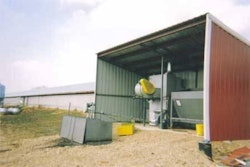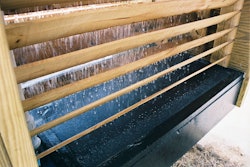A new Directive on welfare conditions for broiler chickens proposed by the European Commission (EC) has been accepted by the Council of Ministers, with certain modifications. Member States will now have until 2010 to implement the new rules.
Health Commissioner, Markos Kyprianou, said, “EU consumers have repeatedly expressed concern at the welfare problems that can arise through intensive chicken farming. This Directive brings in, for the first time, important rules for the animal welfare of broilers. Not only will this result in better animal welfare across Europe but it should also contribute to improving the health of the birds and the quality of their meat.”
The main provision of the Directive is to reduce the stocking density of broiler chickens by setting a maximum stocking density of 33kg/m2 – or 39kg/m2 if stricter welfare standards are met. There are also new conditions covering lighting, litter, feeding and ventilation requirements.
The Directive also allows the Commission to suggest further measures in the future, based on the scientific data and practical evidence collected by the Member States.
Lower stocking density
Under the proposal agreed by Council, a maximum stocking density of 33kg live animals per square metre should be set. This can rise to 39kg/m2 if extra welfare measures are taken, for example the installation of ventilation systems that keep the ammonia, carbon dioxide, temperature and humidity levels within strict parameters. It was also agreed that if exceptionally high welfare standards are met over a prolonged period, the stocking density could be increased by a further 3kg/m2. This is conditional on the achievement of low mortality rates and guides to good management practice. Previously, there had been no rules on space allocations for broilers.
Better conditions
The Directive also details new standards for housing of broilers. For example, lighting must include minimum periods of darkness to allow the chickens to rest, fresh litter must be permanently available and proper ventilation must be in place. Any birds that are seriously injured must be immediately treated or culled in a humane manner.
Stricter requirements for operators
As the welfare of animals relies largely on the people who are handling them, the Directive sets out training and certification requirements for all keepers of intensively reared broilers. All birds must be inspected at least twice a day, paying close attention for any animal health or welfare problems that may arise. Moreover, detailed records must be kept on matters that are relevant for the health and the welfare of the animals, such as the temperature and humidity in the house, medical treatments administered and mortality rates.
Continuing the work
The Directive gives the Commission a mandate to look into further welfare provisions for broiler chickens in the future. Welfare data from slaughterhouses in Member States will be collected EU-wide. On the basis of this data, the Commission will determine whether additional measures would be beneficial.
The Council considered integrating these new measures into a system for welfare labelling for chicken meat, but the idea was rejected, at least for the time being.
Next steps
Once adopted, the Directive will enter into force 20 days after its publication in the Official Journal, and must be implemented by all Member States by the end of June 2010 at the latest.

















